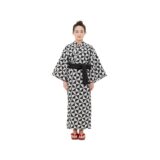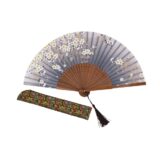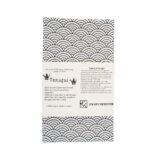Introduction to Japan’s Most Celebrated Festivals
Hello everyone, my name is Syuya. This article introduces ten of Japan’s most famous festivals. These celebrations represent centuries of cultural heritage and spiritual tradition.
Ancient Origins and Religious Foundations
Ancient Japanese communities performed rituals to honor nature’s blessings. They prayed to deities for protection from disasters. These ceremonies formed the foundation of modern festivals. Shinto religion heavily influenced these early celebrations. Rice planting festivals expressed gratitude for agricultural abundance. Communities sought good health and bountiful harvests through prayers. Gion Festival originated as prayers against epidemic diseases. Many regions still preserve these ancient traditions today.
Imperial Development During Nara and Heian Periods
The imperial court organized national-scale festivals during these eras. Kyoto’s Aoi Matsuri exemplifies this aristocratic tradition. Jidai Matsuri also emerged as a major court ceremony. These events transcended simple religious rituals completely. Noble culture merged with artistic performances and music. Elegant processions featured classical court dances called bugaku. Elaborate costumes displayed the aristocracy’s refined aesthetic sensibilities.
Popular Expansion in Medieval and Early Modern Japan
Festivals spread widely among common people during medieval times. Each region developed unique celebratory customs and traditions. The Edo Period brought flourishing merchant culture to cities. Townspeople created lively festivals featuring decorated floats and portable shrines. Entertainment aspects grew increasingly important during this era. These celebrations strengthened community bonds throughout neighborhoods. Festivals became essential social gatherings for ordinary citizens.
Modern Evolution and Tourism Development
Japanese festivals continue throughout the year across the nation. Communities preserve ancient traditions while adapting to contemporary society. Festivals now serve regional promotion and tourism purposes. Fireworks displays attract millions of spectators each summer. Snow festivals transform winter landscapes into artistic wonderlands. Danjiri festivals showcase powerful portable shrine racing traditions. These diverse celebrations reflect Japan’s seasonal changes and regional characteristics. Domestic and international visitors flock to experience these events. Festivals successfully balance cultural preservation with modern entertainment value.
Cultural Significance and Enduring Legacy
Japanese festivals represent profound cultural heritage combining multiple elements. Religious faith forms their spiritual foundation and purpose. Harmony with nature shapes seasonal celebration timing and themes. Community connections strengthen through collective participation and preparation. Artistic expression and entertainment enrich the festive experience. This article presents ten festivals with the highest national recognition. These celebrations best exemplify Japan’s rich festival culture and traditions.
- Gion Festival(Kyoto)
- Tenjin Festival(Osaka)
- Kanda Festival(Tokyo)
- Sapporo Snow Festival(Hokkaido)
- Aomori Nebuta Festival(Aomori)
- Sendai Tanabata Festival(Miyagi)
- Takayama Festival(Gifu)
- Awa Odori(Tokushima)
- Yosakoi Festival(Kochi)
- Hakata Gion Yamakasa(Fukuoka)
- 🎌 A Curated Selection of Traditional and Unique Japanese Festival Goods
- Conclusion
Gion Festival(Kyoto)
Gion Matsuri: Kyoto’s Iconic Month-Long Summer Festival
Gion Matsuri stands as Japan’s most celebrated traditional festival. This event takes place in Kyoto each July. The festival spans an entire month. Locals and visitors gather to witness spectacular parades and ceremonies. Gion Matsuri ranks among Japan’s Three Great Festivals. Its scale, history, and vibrant displays captivate millions annually.
Historical Origins and Cultural Significance
Yasaka Shrine serves as the heart of Gion Matsuri. The shrine sits in central Kyoto. The festival’s roots trace back to 869 CE. A devastating epidemic swept across Japan during the Heian Period. People organized a ritual called Goryoe to appease angry deities. This purification ceremony evolved into today’s grand festival. Over 1,150 years of tradition continue unbroken. Gion Matsuri now symbolizes Kyoto’s summer spirit.
The Spectacular Yamaboko Parade
The Yamaboko Junko parade draws the largest crowds. Two major processions occur each July. Saki Matsuri takes place on July 17. Ato Matsuri follows on July 24. Massive floats called yamaboko dominate these parades. The largest hoko floats reach heights of 25 meters. Each float weighs up to 12 tons. Teams of 50 men pull these giants through narrow streets. Ornate tapestries decorate every surface. Some textiles come from Kyoto’s Nishijin weaving district. Others arrived from distant lands centuries ago.
Moving Museums on Wheels
Artisans call the yamaboko “moving museums.” This description fits perfectly. Each float displays priceless artworks and textiles. UNESCO recognized these floats as Intangible Cultural Heritage in 2016. Ten hoko floats feature towering central poles. Twenty-three yama floats carry life-sized deity figures. Buddhist bodhisattvas and historical heroes stand atop the yama. Traditional craftsmanship shines in every detail. No nails hold these structures together. Ancient carpentry techniques bind the wood.
Yoiyama: The Festival Eve Celebrations
Yoiyama occurs during the three evenings before each parade. These nights run from July 14 to 16 and July 21 to 23. City streets close to vehicle traffic. Thousands of people stroll through downtown Kyoto. Locals wear traditional yukata robes. Illuminated floats create magical scenes. Gion Bayashi music fills the air. Flutes, drums, and bells play traditional melodies. Food stalls line every block. Visitors sample takoyaki, yakitori, and other street foods. The atmosphere buzzes with excitement and anticipation.
Community Pride and Machishu Culture
Gion Matsuri transcends tourism. Local neighborhoods preserve centuries-old traditions. Residents call themselves machishu, or townspeople. Each district maintains its own float. Families pass down responsibilities through generations. Men assemble floats using traditional methods. They work together for weeks before the parade. Women prepare ceremonial items and decorations. Children learn sacred rituals and music. This communal effort strengthens neighborhood bonds. Pride in local heritage runs deep.
A Living Testament to Japanese Culture
Gion Matsuri represents the soul of Japanese tradition. The festival blends religious devotion with artistic expression. Ancient customs meet modern celebration. Kyoto’s summer identity emerges through this month-long event. Visitors experience authentic cultural immersion. They witness history come alive on city streets. Gion Matsuri continues to evolve while honoring its past. The festival remains a powerful symbol of community, craftsmanship, and cultural continuity.
For more information,visit the official website:
Tenjin Festival(Osaka)
Tenjin Matsuri: Osaka’s Grand Festival of Fire and Water
Tenjin Matsuri ranks among Japan’s Three Great Festivals. This spectacular event takes place in Osaka every July. The festival honors Sugawara no Michizane, the deity of scholarship. Osaka Tenmangu Shrine hosts this ancient celebration. Over 1,000 years of tradition continue unbroken. The festival spans two main days: July 24 and 25. These dates mark the peak of Osaka’s summer cultural calendar. Over 1.3 million visitors attend annually.
Ancient Origins and Sacred Beginnings
The festival began in 951 CE during the Heian Period. Osaka Tenmangu Shrine had just been established. Priests performed a sacred ritual called Hoko-nagashi. They released a ceremonial spear into the river. The spear drifted downstream and washed ashore. Officials built an otabisho, or resting shrine, at that location. This divine sign established the festival’s core tradition. The boat procession, or Funatogyo, emerged from this ancient ceremony. River worship became central to Tenjin Matsuri’s identity.
The Two-Day Festival Structure
July 24 marks Yomiya, the festival’s opening day. Priests conduct purification rituals at Tenmangu Shrine. Sacred offerings prepare for the main events. Local communities display golden mikoshi shrines. Participants prepare costumes and ceremonial items. The atmosphere builds with anticipation. July 25 brings Honmiya, the main festival day. This day features the grand processions. Thousands gather along the routes. The celebration reaches its spectacular climax at night.
Rikutogyo: The Magnificent Land Procession
The Rikutogyo land procession begins on July 25. Approximately 3,000 participants join this parade. They wear authentic Heian Period court costumes. These outfits date from the 8th to 12th centuries. Portable shrines lead the procession. Drummers pound massive taiko drums. Dancers perform traditional movements. The parade winds through central Osaka streets. Participants march from Tenmangu Shrine toward the Okawa River. Crowds line the streets to witness this spectacle. The procession demonstrates centuries of preserved tradition.
Funatogyo: The Dramatic Boat Procession
The Funatogyo boat procession begins at dusk. Approximately 100 boats fill the Okawa River. The main vessel carries the sacred mikoshi shrine. Other boats carry musicians and dancers. Red lanterns illuminate each vessel. Traditional instruments play Tenjin Matsuri music. The flotilla moves slowly downstream. Bonfires burn on select boats. The flames reflect on the dark water. This creates the festival’s signature aesthetic. People call it the “Festival of Fire and Water.” The river transforms into a moving stage.
Spectacular Fireworks Display
The festival culminates with dedicated fireworks. Around 3,000 fireworks launch into the night sky. They explode in sync with the boat procession. The display begins after 7:00 PM on July 25. Fireworks mirror on the river’s surface. Lantern-lit boats drift beneath the explosions. The combination creates magical scenes. Spectators gather at riverside parks. Sakuranomiya Park offers prime viewing locations. The fireworks serve as offerings to the deity. This tradition blends spiritual devotion with visual spectacle.
Community Spirit and Cultural Pride
Tenjin Matsuri transcends mere entertainment. Local residents preserve ancient customs through active participation. Neighborhoods prepare for months in advance. Families pass down roles through generations. Traditional craftsmanship appears in every costume and decoration. The festival strengthens community bonds. Citizens take immense pride in their cultural heritage. This event represents Osaka’s vibrant character. The combination of solemnity and celebration defines the festival’s essence. Tenjin Matsuri continues to evolve while honoring its millennium-long history.
For more information,visit the official website:

Kanda Festival(Tokyo)
Kanda Matsuri: Tokyo’s Magnificent Festival of Edo Heritage
Kanda Matsuri stands as one of Japan’s Three Great Festivals. This grand celebration takes place in Tokyo’s Chiyoda Ward. Kanda Myojin Shrine serves as the festival’s spiritual center. The event showcases spectacular processions and vibrant energy. Traditional Edo culture meets modern Tokyo in this unique celebration. The festival occurs every mid-May during odd-numbered years. Even-numbered years feature a quieter version called Kagematsuri. The main festivities span six days of ceremonies and parades.
Ancient Origins and Sacred Foundation
Kanda Myojin Shrine was founded in 730 CE. The shrine’s history stretches back over 1,300 years. The festival began as a harvest prayer ceremony. Priests sought bountiful crops and peaceful times. The celebration gained prominence during the Edo Period. Tokugawa Ieyasu prayed for victory before the Battle of Sekigahara. He triumphed in 1600 at this decisive battle. The shogun subsequently granted special protection to the shrine. This patronage elevated Kanda Matsuri’s status dramatically.
The Prestigious Tenka Matsuri Designation
The Tokugawa Shogunate bestowed a rare honor upon Kanda Matsuri. Officials designated it as Tenka Matsuri, or “Festival Under Heaven.” This title granted extraordinary privileges. Parade participants could enter Edo Castle grounds. Common people rarely glimpsed inside the castle walls. The festival procession brought traditional culture directly to the shogun. This access demonstrated the celebration’s prestige and political significance. Only two festivals received this distinguished status. Kanda Matsuri and Sanno Matsuri shared this exclusive honor.
The Grand Shinkosai Procession
The Shinkosai procession occurs on the festival’s first Saturday. This parade spans approximately 30 kilometers through central Tokyo. The route winds through Kanda, Nihonbashi, Otemachi, and Akihabara. The procession begins at 8:00 AM and continues until 7:00 PM. Three sacred mikoshi shrines lead the parade. Each shrine houses one of Kanda Myojin’s deities. Daikoku, Ebisu, and Taira no Masakado ride within. Traditional musicians play ancient melodies. Priests on horseback wear elaborate ceremonial robes. Dancers perform in authentic Heian Period costumes. Warriors march in full samurai armor. The procession resembles a moving Edo-era painting.
Mikoshi Miyairi: The Climactic Shrine Return
Sunday brings the spectacular Mikoshi Miyairi ceremony. Over 200 portable shrines converge on Kanda Myojin. Local neighborhood associations carry their respective mikoshi. Teams of residents hoist the heavy shrines overhead. They chant traditional phrases in unison. The shrines bounce and sway rhythmically. This creates dramatic visual displays. Each neighborhood takes pride in its unique mikoshi. The atmosphere reaches peak intensity during this event. Thousands of participants fill the shrine grounds. The festival’s energy culminates in this collective celebration.
Traditional Edo Spirit Meets Modern Tokyo
Kanda Matsuri uniquely blends past and present. Ancient rituals unfold amid towering skyscrapers. The parade passes through Akihabara’s electronic district. Traditional drums echo between modern buildings. This juxtaposition creates extraordinary visual contrasts. Few festivals demonstrate such temporal fusion. The celebration maintains strict adherence to tradition. Simultaneously, it embraces contemporary urban settings. This balance represents Tokyo’s dual identity. The city honors its Edo heritage while embracing modernity.
Living Cultural Legacy in Tokyo’s Heart
Kanda Matsuri continues to evolve across centuries. The festival adapts without losing its essential character. Local communities preserve ancient customs and knowledge. Families pass down participation roles through generations. This living tradition strengthens neighborhood bonds. Residents take immense pride in their heritage. The festival represents more than historical reenactment. It embodies the enduring “Spirit of Edo” in modern Tokyo. This celebration demonstrates cultural continuity in Japan’s ever-changing capital.
For more information,visit the official website:
Sapporo Snow Festival(Hokkaido)
Sapporo Snow Festival: Japan’s Premier Winter Celebration
Sapporo Snow Festival transforms Hokkaido’s capital into a magical winter wonderland. This spectacular event takes place every February in Sapporo City. Snow and ice create breathtaking artistic displays. Over 2 million visitors arrive from around the world annually. The festival spans eight days in early February. Three main venues host the celebrations: Odori Park, Susukino, and Tsudome. White sculptures and ice art fill the city center. The event generates approximately 430 million dollars in economic impact.
Humble Beginnings in Post-War Japan
The festival began modestly in 1950. Six local high school students created six snow sculptures. They built their creations in Odori Park. Organizers expected minimal attendance at this first event. Surprisingly, 50,000 people visited the initial festival. This overwhelming response established an annual tradition. The event grew steadily over subsequent years. Citizens embraced it as Sapporo’s signature winter celebration.
Evolution into an International Phenomenon
The Japan Self-Defense Forces joined the festival in 1955. Military engineers brought construction expertise and equipment. They created the first massive snow sculptures. These enormous works transformed the festival’s scale dramatically. The event gained international recognition throughout the 1960s. Foreign participants began entering sculpture competitions. Media coverage spread the festival’s reputation worldwide. Today, approximately 200 sculptures appear at each festival. Several towers reach heights exceeding 12 meters. The sheer scale impresses all visitors.
Odori Park: The Main Artistic Venue
Odori Park serves as the festival’s primary location. This green space stretches 1.5 kilometers through central Sapporo. Massive snow sculptures line the park during festival season. Artists create detailed replicas of famous landmarks. Recent festivals featured miniature versions of world monuments. The Taj Mahal, Arc de Triomphe, and Star Wars characters have appeared. Each sculpture requires weeks of meticulous planning. Teams work around the clock in frigid conditions. Precision and artistry define every creation. Nighttime illuminations transform the sculptures dramatically. Colored lights enhance the frozen artworks. The displays create romantic, otherworldly atmospheres.
Susukino Ice Sculpture Gallery
The Susukino district hosts the ice sculpture exhibition. This entertainment area sits south of Odori Park. Crystal-clear ice blocks become intricate artworks. Professional ice carvers demonstrate exceptional skill. They create detailed figures, animals, and abstract designs. The sculptures achieve remarkable transparency and detail. Some pieces incorporate internal lighting systems. Visitors can walk among dozens of ice creations. The compact venue allows close examination of craftsmanship. Bars and restaurants surround the exhibition area. Many visitors enjoy warm drinks while viewing frozen art.
Tsudome Community Dome: Family Activities
The Tsudome venue offers interactive winter experiences. This community facility provides indoor and outdoor attractions. Families enjoy snow slides and tube runs. Children build snowmen and play in designated areas. Snow rafts pulled by vehicles thrill participants. Indoor spaces offer warmth and rest areas. Local food vendors serve Hokkaido specialties. This venue emphasizes participation over passive observation. The atmosphere focuses on fun and engagement. Young visitors particularly enjoy Tsudome’s hands-on activities.
Volunteer Spirit and Community Pride
Volunteers form the festival’s backbone. Local residents dedicate countless hours to preparations. They assist with construction, guidance, and event management. Community groups maintain neighborhood traditions. This collective effort strengthens social bonds. Pride in the festival runs deep among citizens. The event represents Sapporo’s identity and resilience. Harsh winter conditions inspire creative celebration. Citizens transform seasonal challenges into artistic opportunities. This mindset embodies Hokkaido’s pioneering spirit. The festival demonstrates community cooperation at its finest. Art, tourism, and local culture merge seamlessly in this celebration.
For more information,visit the official website:

Aomori Nebuta Festival(Aomori)
Aomori Nebuta Festival: Tohoku’s Magnificent Summer Spectacle
Aomori Nebuta Festival represents one of Japan’s most dynamic summer celebrations. This spectacular event takes place in Aomori City every August. The festival runs from August 2 through August 7 annually. Giant illuminated floats called nebuta parade through city streets. Over 3 million visitors gather from across Japan and worldwide. The festival ranks among Tohoku region’s three greatest events. Massive warrior figures glow brilliantly against the night sky. The Japanese government designated this festival as Important Intangible Folk Cultural Property in 1980.
Ancient Origins and Cultural Evolution
The festival’s origins trace back to the Nara Period. This era spanned the 700s in Japanese history. The Chinese Tanabata Festival influenced local traditions. Communities performed rituals called Nemuri Nagashi to ward off drowsiness. People believed summer heat caused lethargy and illness. They created small paper lanterns on bamboo frames. Residents floated these lanterns down rivers and into the sea. This practice symbolically washed away sleepiness and misfortune. The term “nebuta” evolved from the word for sleepiness. Over centuries, simple lanterns transformed into elaborate floats. Local artistry and craftsmanship elevated the tradition dramatically.
Massive Nebuta Float Construction
Each nebuta measures up to 9 meters in width. The floats reach 5 meters in height. They extend 7 meters in depth. The largest floats weigh approximately 4 tons. Teams spend an entire year designing each nebuta. Master craftsmen called nebuta-shi lead construction efforts. They create wire frames for structural support. Artists apply layers of washi paper over the frames. Painters add vibrant colors and intricate details. The floats depict warriors, gods, and mythical figures. Historical characters and kabuki actors appear frequently. Some nebuta feature contemporary pop culture icons. Internal lighting brings the figures to life. Approximately 20 nebuta parade during the festival.
Dynamic Parade Performances
The festival transforms downtown Aomori into pedestrian zones. Main streets close to vehicle traffic during parade hours. Nebuta floats move slowly through the crowds. Teams of roughly 30 men pull each massive float. Traditional taiko drums provide powerful rhythms. Flute players perform traditional melodies. The music creates an electrifying atmosphere. Dancers called haneto leap energetically around the floats. They wear distinctive colorful costumes and flower hats. Haneto chant “Rassera! Rassera!” repeatedly. This energetic call echoes through the streets. The chanting intensifies the festival’s excitement.
Open Participation and Inclusive Spirit
The festival welcomes all visitors as participants. Anyone can join as a haneto dancer. Participants must wear the proper costume. Rental shops provide traditional haneto outfits. The costume includes a special yukata robe. Dancers wear flower-decorated hats called hanagasa. They attach small bells to their clothing. These bells jingle rhythmically during jumping. Thousands of haneto dance each evening. This inclusive approach distinguishes Nebuta from other festivals. Visitors become active contributors to the celebration. The boundary between performer and spectator dissolves completely.
Spectacular Maritime Finale
August 7 brings the festival’s grand conclusion. The celebration moves to Aomori Port. Six selected nebuta float on barges. These floats glide across the dark water. The maritime procession creates breathtaking reflections. Fireworks explode above the harbor simultaneously. The pyrotechnic display features thousands of fireworks. Colorful bursts illuminate both sky and sea. The nebuta glow brilliantly against this backdrop. This final night showcases the festival’s ultimate beauty. The combination of water, light, and fire mesmerizes audiences.
Artistic Tradition and Community Pride
Nebuta construction preserves ancient artistic techniques. Master craftsmen train apprentices for decades. Skills pass through generations of families. Each neighborhood takes pride in its nebuta. Competition among districts drives innovation and quality. Artisans balance tradition with creative expression. The festival represents Tohoku’s resilient spirit. Communities pour their passion into these ephemeral creations. Despite Aomori’s harsh winters, summer brings explosive celebration. This contrast embodies the region’s character. The festival demonstrates how art unites communities. It transforms a short summer into unforgettable cultural experiences.
For more information,visit the official website:
Sendai Tanabata Festival(Miyagi)
Sendai Tanabata Festival: Japan’s Most Elegant Star Festival
Sendai Tanabata Festival represents Japan’s grandest celebration of the star festival tradition. This magnificent event takes place in Sendai City every August. The festival runs annually from August 6 through August 8. Vibrant paper decorations transform the city into a colorful wonderland. Over 2 million visitors arrive from across Japan and internationally. The festival ranks among Tohoku region’s three greatest summer celebrations. Elaborate bamboo decorations fill shopping arcades throughout downtown. These artistic displays create magical tunnel-like pathways for pedestrians.
Historical Roots in the Date Masamune Era
The festival traces its origins back approximately 400 years. Date Masamune founded Sendai in the early 17th century. He served as the first feudal lord of Sendai Domain. Masamune actively promoted Tanabata celebrations throughout his territory. He encouraged arts, craftsmanship, and scholarly pursuits among residents. The lord wrote eight poems about Tanabata festivities. These writings provide historical glimpses into early festival practices. Masamune wished for abundant harvests and cultural development. His patronage established Tanabata as a significant annual event. The tradition continued through the Edo Period and beyond.
Post-War Revival and Modern Development
The festival faced decline during World War II. In 1947, Emperor Hirohito visited Sendai. Local residents greeted him with 5,000 Tanabata decorations. This enthusiastic display revitalized the festival tradition. The event subsequently expanded into a major tourist attraction. Modern celebrations maintain historical authenticity while embracing contemporary elements. The festival now serves both cultural preservation and economic purposes. Local businesses invest heavily in elaborate decoration designs. Competition for the most beautiful displays drives continuous innovation.
The Seven Sacred Ornaments
Traditional Sendai Tanabata decorations feature seven distinct ornaments. Each ornament carries specific symbolic meaning and purpose. Tanzaku paper strips display handwritten wishes for the future. Kamigoromo paper kimono represent protection from illness. Orizuru folded cranes symbolize longevity and family safety. Kinchaku purses signify business prosperity and financial wisdom. Toami fishing nets represent abundant catches and good fortune. Kuzukago waste baskets promote cleanliness and frugal living. Fukinagashi streamers ward off evil spirits and misfortune. These seven elements must appear together in authentic displays. The combination reflects centuries of cultural tradition and spiritual beliefs.
Spectacular Decorations and Craftsmanship
Master craftsmen spend months creating each major decoration. Designs remain secret until August 6 morning. Teams use washi paper, bamboo, and origami materials. The largest decorations exceed 10 meters in length. Five streamers typically hang from each bamboo pole. Multiple poles create dense canopies over shopping streets. Visitors walk beneath these colorful tunnels throughout downtown. The decorations sway gently in summer breezes. Arcade roofs protect the delicate paper from rain. Artificial lighting enhances the displays after sunset. The combination creates dreamlike, romantic atmospheres. Artisans balance traditional techniques with creative innovation.
Opening Night Fireworks Spectacular
August 5 marks the festival’s ceremonial beginning. The Sendai Tanabata Fireworks Festival launches that evening. Approximately 16,000 fireworks illuminate the night sky. The display takes place along the Hirose River. Spectators gather at riverside parks and bridges. The pyrotechnics announce the festival’s official start. This preliminary celebration builds excitement and anticipation. The fireworks complement the next three days’ decoration displays. Many visitors arrive specifically for this opening event.
Cultural Significance and Community Pride
The festival transcends mere tourist entertainment. Deep spiritual meaning pervades every decoration element. Residents express prayers for health, prosperity, and happiness. Shopkeepers compete to create the most impressive displays. Neighborhood pride drives participation and financial investment. The event strengthens community bonds and shared identity. Sendai citizens view Tanabata as integral to their cultural heritage. The festival balances commercial success with authentic tradition. Visitors experience genuine spiritual atmosphere alongside visual beauty. This combination distinguishes Sendai Tanabata from other Japanese festivals. The celebration embodies grace, elegance, and heartfelt devotion throughout Tohoku’s brief summer season.
For more information,visit the official website:

Takayama Festival(Gifu)
Takayama Festival: Japan’s Twin Celebrations of Seasonal Beauty
Takayama Festival ranks among Japan’s Three Most Beautiful Festivals. This magnificent celebration occurs twice annually in Takayama City, Gifu Prefecture. Spring festivities take place on April 14 and 15. Autumn celebrations follow on October 9 and 10. The festival showcases ornate festival floats called yatai. These mobile masterpieces parade through historic streets lined with traditional buildings. UNESCO designated both festivals as Intangible Cultural Heritage in 2016. Hundreds of thousands of visitors arrive from across Japan and internationally. The events perfectly blend artistic craftsmanship with natural seasonal beauty.
Historical Origins and Cultural Development
Historical documents from 1692 reference festival origins 40 years earlier. This places the festival’s beginnings around the 1650s. Takayama flourished as a prosperous castle town during the Edo Period. The region served as direct shogunate territory from 1692 onward. This special status brought wealth and cultural sophistication. Local craftsmen developed exceptional woodworking and metalworking skills. Artisan guilds refined techniques across multiple generations. Festival floats evolved from simple structures into elaborate artworks. Each float represents centuries of accumulated craftsmanship and community pride.
Spring Festival at Hie Shrine
The spring celebration honors Hie Shrine, also called Sanno Shrine. Twelve magnificent yatai floats participate in the spring festivities. The festival serves as prayers for successful harvests. Cherry blossoms typically bloom during these mid-April dates. Pink petals create stunning backdrops for golden floats. Three floats feature mechanical karakuri puppet performances. The Sanbaso, Shiyakkyotai, and Ryujintai floats showcase these performances. Skilled puppeteers control intricate marionettes using 36 silk cords. Nine operators coordinate movements for each puppet display. The puppets perform acrobatic routines on miniature trapezes. Spectators gasp and cheer at these technical marvels.
Autumn Festival at Sakurayama Hachiman Shrine
The autumn celebration centers on Sakurayama Hachiman Shrine. Eleven elaborate yatai floats parade during autumn festivities. This festival expresses gratitude for successful harvests. Surrounding mountains display brilliant autumn foliage during October. Red and gold leaves frame the ornate floats dramatically. The autumn festival features unique Yatai Hikimawashi processions. Floats maneuver through narrow streets in impressive demonstrations. Teams coordinate perfectly to navigate tight corners. The autumn celebration includes special nighttime illuminations. Hundreds of paper lanterns transform the floats at dusk.
Exquisite Craftsmanship and Artistic Details
Each yatai represents masterful traditional craftsmanship. Artisans apply gold leaf extensively across surfaces. Lacquerware techniques create lustrous finishes that glow. Master carvers create intricate sculptural details. Metalworkers forge elaborate decorative fittings. Textile artists produce embroidered silk fabrics. Construction employs ancient joinery methods without nails. Each float requires continuous maintenance and restoration. Local craftsmen dedicate entire careers to single floats. The yatai demonstrate Hida region’s legendary woodworking traditions. Experts compare their quality to Nikko’s famous Yomeimon Gate. The Japanese government designated the floats as Important Tangible Folk Cultural Properties.
Evening Festivities and Mystical Atmospheres
Night festivals occur on April 14 and October 9. Over 100 paper lanterns illuminate each float after sunset. The lanterns create magical glowing sculptures against darkness. Traditional musicians perform on moving floats throughout evenings. Flutes and drums provide haunting, atmospheric soundtracks. Floats move slowly through torch-lit historic districts. The combination produces dreamlike, timeless experiences. Old wooden buildings frame the illuminated processions perfectly. This harmony between architecture and celebration defines Takayama’s unique character.
Preserved Beauty and Community Dedication
The festival balances magnificence with refined elegance. Displays avoid excessive ostentation despite their grandeur. This restraint reflects mountain region aesthetic sensibilities. Local residents maintain deep connections to festival traditions. Families preserve specific roles across multiple generations. Neighborhoods compete respectfully for most beautiful float displays. Storage houses throughout the city protect yatai year-round. The community invests enormous resources in festival preservation. This dedication ensures authentic cultural transmission continues. Takayama Festival embodies harmony between human creativity and seasonal natural beauty. It represents Japanese aesthetic principles at their finest expression.
For more information,visit the official website:

Awa Odori(Tokushima)
Awa Odori Festival: Japan’s Most Energetic Dance Celebration
Awa Odori Festival represents Japan’s largest and most dynamic dance event. This spectacular celebration takes place in Tokushima City every August. The festival runs annually from August 12 through August 15. Over 1.3 million visitors arrive from across Japan and internationally. The event features 100,000 dancers performing in coordinated groups. Traditional music drives the rhythmic dance movements throughout four days. The festival’s famous motto declares “Fools dance and fools watch.” This phrase encourages everyone to participate without self-consciousness. The celebration boasts over 400 years of unbroken tradition.
Historical Origins and Castle Celebration
The festival traces its origins to 1587 during the Tensho Period. Feudal lord Hachisuka Iemasa completed construction of Tokushima Castle that year. He distributed sake freely to celebrate this architectural achievement. Citizens from all social classes joined the spontaneous celebration. People danced through streets in joyous, uninhibited movements. This spontaneous revelry established the festival’s foundational spirit. The dance evolved from simple folk movements into refined performance art. By the Edo Period, Awa’s Bon dance gained nationwide recognition. The tradition survived centuries of political and social changes.
Dance Groups and Performance Structure
Dancers organize into groups called ren for performances. Each ren represents a neighborhood, company, or social organization. Approximately 1,000 registered ren participate annually. Major ren maintain year-round practice schedules and dedicated facilities. Members wear matching costumes that identify their specific group. Ren compete informally for crowd appreciation and artistic excellence. Some famous ren have operated for multiple generations. These established groups preserve specific choreographic traditions and musical arrangements.
Distinct Gender Dance Styles
Men and women perform dramatically different dance movements. Female dancers wear elegant yukata robes and woven bamboo hats. They raise their hands gracefully above their shoulders. Women execute fluid, flowing movements emphasizing elegance. Their dance creates impressions of floating through space. Male dancers adopt lower, more grounded postures. They wear shorter happi coats and headbands. Men perform dynamic, vigorous movements with bent knees. Their style emphasizes strength, energy, and rhythmic precision. Both styles require years of practice to master properly.
Musical Accompaniment and Instruments
Traditional instruments provide the festival’s distinctive soundtrack. Shamisen players pluck three-stringed lutes rhythmically. Taiko drummers pound large barrel drums with powerful strikes. Shinobue flute players perform high-pitched melodic lines. Kane bell players keep steady rhythmic patterns. Musicians march alongside or behind the dancers. The music creates hypnotic, repetitive patterns that energize performers. Each ren maintains its own musical ensemble. The combined sound of multiple ren creates overwhelming auditory experiences.
Paid Venues and Street Performances
The festival features both ticketed and free viewing opportunities. Six paid venues host scheduled performances throughout evenings. These covered stages provide excellent viewing conditions and seating. Tickets range from 2,000 to 3,000 yen per person. Free street performances occur throughout the downtown area simultaneously. Thousands gather along major thoroughfares for unrestricted viewing. The street atmosphere generates more spontaneous energy and excitement. Many visitors prefer the free street experience despite crowded conditions.
Inclusive Participation Through Niwaka Ren
The festival welcomes tourist participation through niwaka ren groups. Niwaka means “impromptu” or “sudden” in Japanese. Anyone can join these open groups without prior experience. Participants must wear appropriate costume elements including yukata. Rental shops throughout the city provide complete outfit packages. Staff members teach basic movements before street performances begin. This inclusive approach distinguishes Awa Odori from many traditional festivals. Thousands of tourists dance alongside experienced performers annually. The experience creates lasting memories and cultural connections. This openness embodies Tokushima residents’ warm, welcoming character and the festival’s joyful spirit.
For more information,visit the official website:
Yosakoi Festival(Kochi)
Yosakoi Festival: Kochi’s Explosive Celebration of Dance and Creativity
Yosakoi Festival represents one of Japan’s most energetic and creative summer celebrations. This dynamic event takes place in Kochi City every August. The festival runs annually from August 9 through August 12. Approximately 200 dance teams participate in this spectacular event. These teams include roughly 20,000 dancers from across Japan and internationally. Over 1 million visitors gather to witness the performances. Dancers carry naruko wooden clappers that create distinctive clicking sounds. Colorful costumes and original music distinguish each performing group. The festival transforms downtown Kochi into a massive outdoor theater.
Post-War Origins and Economic Revival
The festival began in 1954 during Kochi’s post-war recovery period. The Kochi Chamber of Commerce initiated this celebration to revitalize local spirits. The original event lasted only two days: August 10 and 11. Economic recession had dampened community morale significantly. City leaders sought innovative ways to energize residents and businesses. They created a new dance style combining traditional and contemporary elements. The first yosakoi festival took place on Shikoku island. The festival’s name derives from “yoru kō” meaning “come at night.” This reflected the desire for evening community gatherings and celebration.
Flexible Rules and Creative Freedom
The festival establishes only two mandatory requirements for participants. Teams must use naruko wooden clappers during performances. They must incorporate phrases from the traditional Yosakoi-bushi folk song. Beyond these basic rules, creative freedom prevails completely. Teams design their own unique costumes without restrictions. Musical arrangements range from traditional to rock and pop. Choreography varies dramatically between different groups. Some teams perform traditional Japanese movements while others incorporate hip-hop. This flexibility distinguishes Yosakoi from more rigid traditional festivals. Innovation and experimentation receive encouragement rather than criticism.
Sixteen Performance Venues Throughout the City
The festival rotates performances through 16 locations within Kochi City. The main venue stands at Otesuji Street’s central competition area. Nine official competition venues host judged performances throughout the festival. Seven additional dance performance venues provide non-competitive stages. Street performances occur spontaneously throughout downtown areas. Audiences move freely between different venue locations. Each location offers distinct viewing experiences and atmospheres. Some venues feature covered seating areas for spectators. Others provide standing-room-only street-level viewing opportunities. This multi-venue format distributes crowds effectively across the city.
Team Structure and Year-Round Preparation
Dance teams typically consist of 20 to 100 members. All team members move in perfect unison during performances. Each team creates completely original musical arrangements annually. Professional composers often collaborate on these custom soundtracks. Teams practice intensively throughout the entire year. Rehearsals increase in frequency as August approaches. Costume designers create elaborate matching outfits for entire teams. Some teams invest millions of yen in costume production. Leading teams maintain dedicated practice facilities and warehouses. Member commitment levels rival professional sports teams. This dedication produces extraordinarily polished performances.
National and International Expansion
The festival’s influence spread nationally beginning in 1992. Students in Hokkaido created the YOSAKOI Soran Festival in Sapporo. This adaptation became Japan’s second-largest yosakoi event. Subsequent festivals emerged in Tokyo, Nagoya, Osaka, and Sendai. Over 200 yosakoi-style festivals now operate across Japan. International versions exist in Taiwan, Brazil, and Malaysia. The Penang Yosakoi Festival in Malaysia attracts multiple international teams. These global events maintain core yosakoi principles while adding local elements. Kochi’s original festival remains the spiritual center of this movement. Teams from throughout Japan and overseas compete for recognition in Kochi.
Inclusive Participation and Community Spirit
The festival maintains remarkably open participation policies. Visitors can join designated teams even without prior experience. Tourist-friendly teams welcome international participants enthusiastically. These groups provide costume rentals and basic instruction. Participants learn fundamental movements in quick orientation sessions. This inclusive approach democratizes festival participation completely. Professional and amateur dancers perform side-by-side throughout events. The festival embodies Kochi residents’ warm, welcoming character. It demonstrates how tradition can evolve while maintaining cultural authenticity. Yosakoi represents the perfect fusion of preservation and innovation in Japanese festival culture.
For more information,visit the official website:

Hakata Gion Yamakasa(Fukuoka)
Hakata Gion Yamakasa: Fukuoka’s Explosive 770-Year Racing Tradition
Hakata Gion Yamakasa represents one of Japan’s most vigorous and masculine festivals. This spectacular event takes place in Hakata Ward, Fukuoka City. The festival runs annually from July 1 through July 15. Teams of men carry massive floats called yamakasa through city streets. The floats weigh approximately one ton each. This tradition has continued unbroken for over 770 years. Approximately 1 million spectators gather to witness this powerful celebration. The Japanese government designated it Important Intangible Folk Cultural Property in 1979. The festival embodies Hakata’s warrior spirit and community pride.
Origins in Disease Prevention Rituals
The festival traces its origins to 1241 during the Kamakura Period. A devastating plague afflicted Hakata that year. The Buddhist monk Enni-Ben’en founded Joten-ji Temple around this time. He became posthumously known as Shoichi Kokushi, National Teacher. The monk created a sacred float and rode through infected neighborhoods. He sprinkled holy water on buildings and residents. This purification ritual successfully halted the epidemic’s spread. Grateful citizens established an annual commemoration of this miraculous event. The ceremony evolved from religious ritual into community celebration. The tradition passed through countless generations of Hakata residents.
Sacred Center at Kushida Shrine
Kushida Shrine serves as the festival’s spiritual headquarters. Locals call this shrine “Hakata’s Sovereign Protector.” The shrine enshrines the deity Susanoo-no-Mikoto, storm god and disease preventer. All festival activities ultimately focus on this sacred location. The climactic July 15 race begins and ends at Kushida’s grounds. Seven neighborhood districts called nagare organize festival participation. Each nagare maintains its own distinctive traditions and customs. These districts compete fiercely for speed and honor. The nagare system preserves neighborhood identities within modern urban Fukuoka.
Kazariyama: Towering Decorative Masterpieces
Fourteen elaborate kazariyama decorative floats appear throughout the festival period. These stationary displays stand over 10 meters tall. Master craftsmen spend months creating intricate figurine arrangements. The floats depict historical warriors, mythological characters, and popular culture icons. Front sides feature traditional Japanese themes from history and legend. Rear sides often display contemporary anime and manga characters. This combination appeals to multiple generations of viewers. Each kazariyama weighs several tons and requires substantial structural engineering. These artistic displays remain in designated locations throughout July. Visitors can view them up close without crowds or time pressure.
Kakiyama: The Racing Floats
Seven kakiyama racing floats participate in actual running events. Each kakiyama stands approximately 3 meters in height. The floats weigh precisely one ton despite their compact size. Teams consist of 30 men who rotate carrying duties. Carriers wear traditional fundoshi loincloths and happi coats. Water bearers splash water continuously in front of running teams. This reduces friction between road surfaces and float bases. The practice also cools runners in July’s oppressive heat. Kakiyama lack wheels and rely entirely on human strength. Teams must navigate narrow alleyways and sharp corner turns. This demands perfect coordination and tremendous physical conditioning.
Climactic Oiyama Dawn Race
July 15 brings the festival’s ultimate culmination called Oiyama. The race begins precisely at 4:59 AM before sunrise. All seven nagare teams gather at Kushida Shrine simultaneously. Each team waits at designated starting positions around the shrine. An official signal launches all teams into furious motion. Teams sprint a 5-kilometer course through central Hakata streets. The race typically concludes within 30 minutes of starting. Winning teams achieve legendary status within their neighborhoods. Preparation for Oiyama begins months before July. Men practice running routes and build physical endurance. Team members abstain from certain foods and activities. This discipline reflects the festival’s serious religious foundations.
Community Dedication and Male Bonding
The festival operates exclusively through volunteer community participation. No professional organizers or corporate sponsors control festival operations. Neighborhood associations fund and manage all activities independently. Men begin preparations immediately after each year’s festival concludes. They maintain practice schedules throughout the entire year. Boys join training programs during elementary school years. This ensures continuous transmission of knowledge and techniques. The festival strengthens male bonds across generational lines. Participants describe lifelong friendships forged through shared festival experiences. Women traditionally support the festival through administrative and catering roles. This gender division reflects centuries-old social structures in Hakata culture. The festival preserves authentic traditional community organization patterns rarely seen in modern Japan.
For more information,visit the official website:

🎌 A Curated Selection of Traditional and Unique Japanese Festival Goods
We introduce convenient items for attending Japanese festivals. These products enhance your festival experience significantly. Bring the right goods to enjoy festivals 100 percent. Proper preparation transforms good experiences into unforgettable memories. Discover the essential items that savvy festival-goers always carry.
👘 1. Culturally Inspired Japanese Costumes and Decorations
Yukata(Yukata)

Enhance Your Festival Experience with Yukata
Yukata offers the perfect attire for Japanese summer festivals. The lightweight cotton fabric keeps you cool during hot weather. Yukata costs less than traditional kimono and requires simple dressing techniques. You blend naturally into the festival atmosphere and create stunning photographs. Wearing yukata transforms ordinary festival visits into unforgettable cultural experiences. Purchase your own yukata to fully embrace Japan’s vibrant festival traditions.
jimbei(甚平)

Why Purchasing Jinbei Enhances Your Festival Experience
Jinbei represents the ideal traditional outfit for summer festivals. This two-piece set features a short-sleeved top and shorts. Men and children wear jinbei comfortably throughout hot weather. The separate pieces allow easy wearing without complex techniques. Jinbei provides more mobility than yukata for active participation. The breathable cotton fabric keeps you cool during humid evenings. Families can coordinate matching jinbei sets across all ages. This casual traditional attire creates relaxed festival atmosphere perfectly. Purchase jinbei to enjoy festivals with comfort and authentic style.
Geta(下駄)・Zori(草履)

Complete Your Festival Look with Geta and Zori
Geta and zori represent traditional Japanese footwear for festivals. These wooden sandals perfectly complement yukata and jinbei outfits. Your authentic festival style becomes complete from head to toe. The elevated wooden base provides excellent ventilation during hot weather. Your feet stay cool and comfortable throughout long festival hours. Geta creates distinctive clicking sounds that enhance festival atmosphere. Zori offers flatter soles for easier walking and stability. Both styles feature comfortable thong straps between your toes. Purchase traditional footwear to fully embrace authentic Japanese festival fashion.
Sensu(扇子)・Uchiwa(団扇)

Stay Cool with Traditional Sensu and Uchiwa Fans
Sensu and uchiwa provide essential cooling at summer festivals. These traditional fans require no batteries or electrical power. You never worry about charging or running out of power. They work reliably throughout entire festival days and nights. Folding sensu fit easily into small bags or pockets. Uchiwa’s flat design offers stronger airflow for instant cooling. Both fans weigh almost nothing for effortless carrying. Beautiful patterns complement yukata and jinbei outfits perfectly. Fans serve as elegant props for memorable festival photographs. Purchase authentic Japanese fans for practical cooling and traditional style.
🎆 2. Useful items to enjoy Japanese festivals more comfortably
Handheld Fan

Beat the Heat with Portable Handheld Fans
Portable handheld fans provide powerful cooling at crowded summer festivals. Electric fans deliver stronger airflow than traditional sensu or uchiwa. They quickly lower your body temperature during intense heat. Continuous airflow keeps you comfortable throughout entire festival events. Handheld models allow you to direct cooling precisely where needed. Neck-worn styles free both hands for eating and photography. Rechargeable batteries enable repeated use across multiple festival days. Compact designs fit easily into bags or pockets. These fans effectively prevent dangerous heat exhaustion and heatstroke. Purchase a reliable handheld fan for safe and comfortable festival experiences.
Power Bank

Stay Connected with Reliable Power Banks
Power banks prove essential for full-day festival attendance. Photography and video recording drain smartphone batteries extremely quickly. You capture every special moment without missing spectacular performances. Map applications help you navigate crowded festival areas safely. Transportation apps ensure smooth travel to multiple venue locations. Continuous contact with friends and family remains possible throughout events. Cashless payment systems function reliably for food and souvenir purchases. Emergency situations never leave you without communication access. High-capacity models charge multiple devices for entire groups. Purchase dependable power banks to enjoy festivals worry-free from start to finish.
Smartphone tripod

Capture Professional Festival Memories with Smartphone Tripods
Smartphone tripods enable stable, professional-quality festival photography and videography. Steady mounts eliminate blurry images caused by hand tremors. Group photos include everyone without missing family or friends. Time-lapse videos beautifully document entire parade sequences and crowd movements. Long exposure shots capture stunning fireworks displays with crystal clarity. Tripods provide superior stability compared to handheld selfie sticks. Night festival lighting requires steady cameras for sharp, detailed images. Compact folding designs fit easily into bags without adding weight. Remote shutter controls allow hands-free operation from comfortable distances. Purchase reliable smartphone tripods to preserve your precious festival experiences perfectly.
Foldable Umbrella

Prepare for Any Weather with Compact Foldable Umbrellas
Foldable umbrellas protect you from unpredictable summer weather conditions. Sudden evening showers frequently occur during Japan’s festival season. Your festival experience continues comfortably despite unexpected rainfall. Strong afternoon sunshine requires protection from harmful UV rays. Umbrellas provide cooling shade during intense daytime heat. Lightweight designs fit easily into small bags or backpacks. Dual-purpose models function as both rain and sun protection. Your yukata or jinbei stays dry and pristine throughout events. Weather concerns never force you to abandon festival plans early. Purchase reliable foldable umbrellas to enjoy festivals regardless of weather changes.
Insect Repellent

Enjoy Bite-Free Festivals with Effective Insect Repellent
Insect repellent ensures comfortable outdoor festival experiences throughout summer evenings. Mosquitoes emerge in large swarms after sunset at festival venues. Constant itching from bug bites ruins your festival enjoyment completely. Yukata and jinbei expose arms and legs to mosquito attacks. Evening performances and fireworks occur during peak mosquito activity hours. Spray formulas provide quick and even application across exposed skin. Long-lasting protection keeps insects away for entire festival durations. Compact bottles fit easily into small bags or pockets. Family-size containers protect multiple people throughout the day. Purchase reliable insect repellent to focus on festivals without annoying distractions.
🎇 3. Experience-based items to recreate Japanese festivals anywhere
Fireworks Set

Create Magical Memories with Traditional Handheld Fireworks
Handheld fireworks represent beloved Japanese summer festival traditions. These sparklers create unforgettable bonding moments with family and friends. People of all ages enjoy this safe and accessible activity. The festival experience extends beautifully into evening hours after main events. Senko hanabi sparklers offer uniquely Japanese delicate and poetic beauty. Their gentle glow creates peaceful, contemplative atmospheres under night skies. Affordable sets make authentic cultural experiences accessible to everyone. Sparkler photographs capture magical, ethereal scenes for lasting memories. Many festivals designate specific areas for safe handheld fireworks use. Purchase traditional fireworks sets to fully embrace Japan’s cherished summer customs.
Chōchin

Illuminate Your Festival Experience with Traditional Chōchin Lanterns
Chōchin paper lanterns embody essential Japanese festival aesthetics and atmosphere. Their warm, soft glow creates magical ambiance during evening celebrations. Handheld lanterns provide safe illumination through crowded nighttime festival streets. Children carrying chōchin create adorable, photogenic moments for family albums. Battery-powered LED versions eliminate fire hazards while maintaining traditional appearance. The gentle light perfectly complements yukata and traditional festival settings. Lanterns enhance the authentic cultural experience for both participants and spectators. Decorative designs feature traditional patterns, characters, and festival-specific motifs. These iconic symbols serve as meaningful souvenirs of Japanese culture. Purchase authentic chōchin to fully immerse yourself in festival magic.
Tenugui

Master Festival Comfort with Multi-Purpose Tenugui Towels
Tenugui represents Japan’s most versatile traditional festival accessory item. These thin cotton towels absorb perspiration quickly during hot summer days. Wrapping tenugui around your neck provides effective sun protection and cooling. Tying tenugui as headbands creates authentic traditional festival participant appearances. The lightweight fabric dries rapidly and occupies minimal bag space. Festival-exclusive designs commemorate specific events as meaningful collectible souvenirs. Tenugui functions as towels, bandanas, scarves, and decorative accessories simultaneously. Traditional patterns range from classic geometric designs to contemporary anime characters. One affordable tenugui serves multiple practical and aesthetic purposes throughout festivals. Purchase versatile tenugui to experience authentic Japanese festival culture efficiently.
Conclusion
Conclusion
How did you enjoy this article? We introduced ten famous Japanese festivals and essential convenient items. Did any particular festival capture your interest? We hope this guide helps you plan memorable festival experiences. Thank you very much for reading to the end.




コメント